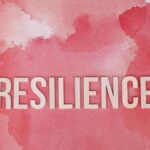Stories are ingrained in our human experience. From campfire tales to captivating movies, they have the power to transport us, ignite our emotions, and leave a lasting impression. As an entrepreneur, this inherent human love for stories can be a powerful tool in your marketing arsenal.
This article, inspired by Rebecca Pepper, a member of Toastmasters International, explores the art of storytelling and how you can leverage it to make your brand message unforgettable. We’ll delve into the captivating story of a daring crocodile encounter (complete with a surprising twist!), and use it to uncover the key elements of crafting a narrative that resonates with your audience.
Why Storytelling Matters in Business
In today’s crowded marketplace, differentiation is key. Simply telling people about your product or service is no longer enough. You need to create a connection, evoke emotions, and leave a lasting impression.
Storytelling achieves this by:
- Engaging Your Audience: Stories tap into our natural curiosity and desire for connection. They transport listeners on a journey, making them invested in the outcome.
- Building Emotional Connection: Stories have the power to evoke emotions, creating a deeper connection with your audience. This emotional connection fosters trust and loyalty towards your brand.
- Making Information Memorable: Facts and figures are easily forgotten. However, stories are more likely to be remembered and shared, ensuring your message has staying power.
The Secret Speciality of a Memorable Story: Audience First!
Let’s revisit the captivating tale of the daring crocodile encounter. What made this story so memorable? The key lies in Rebecca Pepper’s grandfather’s approach: it was all about the audience.
Here’s how to apply this audience-centric approach to your brand story:
- Know Your Audience: Understanding your target audience’s needs, desires, and pain points is crucial. Tailor your story to resonate with their specific interests and challenges.
- Tailor Your Message: Don’t just tell the same story to everyone. Adapt your narrative, highlighting aspects that are most relevant and impactful for your specific audience.
- Benefits Over Features: Focus on how your product or service improves your audience’s lives. Use your story to illustrate the benefits they can experience.
Crafting Your Brand Narrative: Beyond the Words
Now that you understand the importance of audience focus, let’s explore the elements of actually crafting your brand story:
- Vivid Details: Use evocative language to paint a picture in your audience’s mind. Allow them to “see,” “hear,” and “feel” the experience you’re describing.
The Crocodile Encounter: A Case Study in Audience Focus
Rebecca Pepper’s grandfather, a master storyteller, captivated his audience with a tale of wrestling a crocodile in the stifling jungle heat. The story unfolded with dramatic details – the menacing glint in the reptile’s eye, the desperate struggle in the muddy water. However, the key to its memorability wasn’t just the action.
Here’s the twist: As the story reached its climax, Rebecca’s grandfather would always pause, building suspense. Then, he’d reveal the real reason for the encounter – retrieving his hat that had blown off while exploring the jungle! This unexpected twist, tailored to the audience’s expectations, left a lasting impression. It demonstrated his adaptability and focus on his audience’s entertainment.
- The Power of Pause: Silence can be a powerful tool. Use strategic pauses to build suspense and draw your audience deeper into your story.
- Vocal Variety: Avoid a monotone delivery. Vary your pace, volume, and pitch to keep your audience engaged.
- Body Language Matters: Use your body language to complement your story. Gestures and facial expressions can enhance the narrative and connect with your audience on a deeper level.
- The Prop Factor: Props can add a memorable touch to your story. However, use them judiciously. The prop should enhance your narrative, not overshadow it.
The Lasting Impact: It’s All About Them
Remember, the success of your brand story hinges on your audience. Continuously observe their reactions and adapt your narrative to best meet their needs.
Here are some questions to consider:
- What are my target audience’s biggest challenges or aspirations?
- How can my product or service help them overcome these challenges or achieve their goals?
- What emotions can I evoke through my story to create a connection?
- How can I tailor my story’s delivery (language, body language) to maximise audience engagement?
By keeping these questions in mind and prioritising your audience experience, you can craft a compelling brand story that leaves a lasting impression and propels your business forward.
Now I’d love to hear from you…
- Have you used storytelling in your marketing efforts? If so, how?
- What challenges have you faced in crafting a compelling brand story?
- What tips would you share with other entrepreneurs for crafting stories that resonate with their audience?
Share your thoughts and experiences in the comments below.
_________________________________________________________________
If you’ve enjoyed reading today’s blog, please share it (links below).
Do you have a blog on business and marketing that you’d like to share? Contact me at rob@influxjuice.com.
Learn how to get your brand in front of your ideal clients with this free marketing guide
Latest Blogs
- 8 Easy Fixes for a User-Friendly Mobile Website
- How to Spot a Resilient Business
- 8 Proven Strategies to Empower Your Remote Workforce
- How Entrepreneurs can Squeeze the Best out of the Rest of 2024
- 8 Ways Entrepreneurs Can Close Presentations with a Bang







